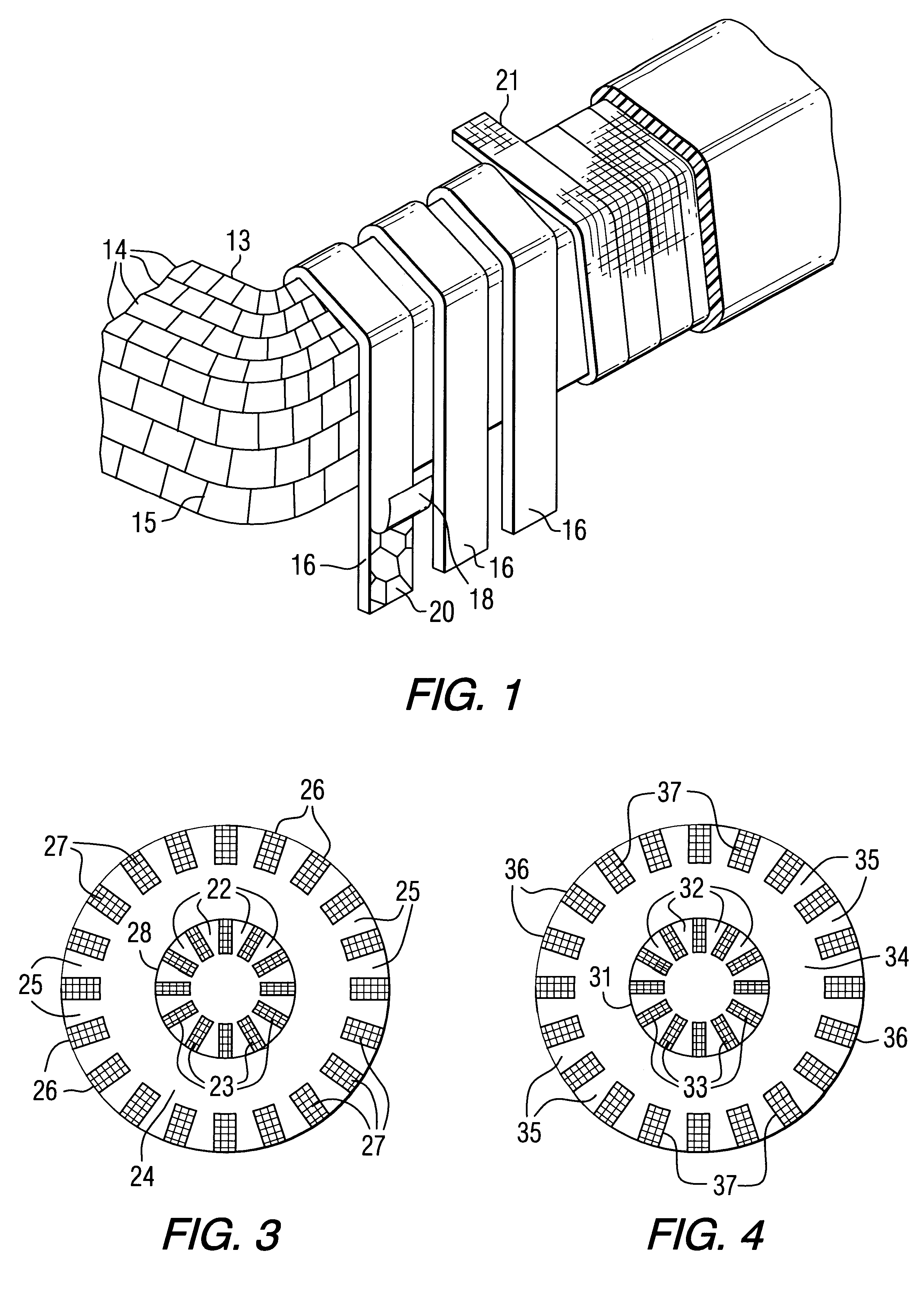Enhanced dielectric strength mica tapes
a dielectric strength and mica technology, applied in the field of enhanced dielectric strength mica, can solve the problems of mica surface problem area, difficult to eliminate voids, and formation of voids at the mica surfa
- Summary
- Abstract
- Description
- Claims
- Application Information
AI Technical Summary
Benefits of technology
Problems solved by technology
Method used
Image
Examples
Embodiment Construction
Preparation of Metal Cation Intercalated Nanoclays
Metal cation intercalated nanoclays were prepared by dissolving the metal oligomer in a solvent, such as MEK, and then adding the nanoclay powder and stirring about twelve hours. Typical amounts of ingredients were as follows:
The resulting solution, after stirring, was filtered and the resulting metal cation intercalated nanoclay product was dried under vacuum at 60.degree. C. Table 1 gives details of three of the nanoclay products made by this procedure. In the case of the zinc intercalated product (that is, nanoclay "G"), butyl cellosolve was used in place of MEK because of improved solubility.
Preparation of Mica Tape Samples
Mica bond compositions were prepared as shown by the three examples in Table 2.
The epoxy resins used (DER 661 and DER 332) are bisphenol `A` resins readily commercially available from Dow Chemical Co.
Mica sheet samples 21.6 cm.times.27.9 cm (8.5 in..times.11 in.) were prepared by applying a weighed amount of re...
PUM
| Property | Measurement | Unit |
|---|---|---|
| thickness | aaaaa | aaaaa |
| thickness | aaaaa | aaaaa |
| thickness | aaaaa | aaaaa |
Abstract
Description
Claims
Application Information
 Login to View More
Login to View More - R&D
- Intellectual Property
- Life Sciences
- Materials
- Tech Scout
- Unparalleled Data Quality
- Higher Quality Content
- 60% Fewer Hallucinations
Browse by: Latest US Patents, China's latest patents, Technical Efficacy Thesaurus, Application Domain, Technology Topic, Popular Technical Reports.
© 2025 PatSnap. All rights reserved.Legal|Privacy policy|Modern Slavery Act Transparency Statement|Sitemap|About US| Contact US: help@patsnap.com



